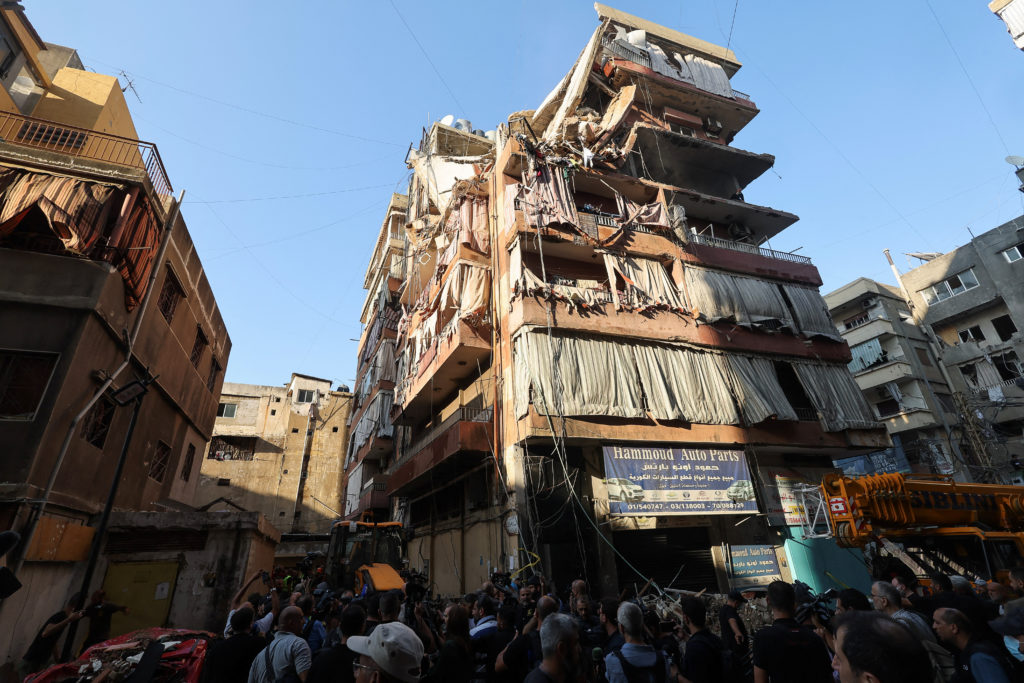In a recent significant development, it has been widely reported that Hezbollah’s leader, Hassan Nasrallah, was likely killed in a targeted airstrike. The strike, believed to have used US-made explosives, has raised questions about the types of munitions involved and their role in high-stakes counterterrorism operations. In this post, we’ll explore the bombs the U.S. military likely used in the operation, focusing on their capabilities, why they were chosen, and the broader implications for modern warfare.
The Bombs in Question: United States Precision Weapons
The U.S. military has long relied on a range of precision-guided bombs for strikes against high-value targets. In this case, reports suggest that 2,000-pound bombs were likely used. The most common type of bomb that fits this profile is the GBU-31 Joint Direct Attack Munition (JDAM), a bomb kit that transforms conventional “dumb” bombs into precision-guided munitions. JDAMs are designed to hit targets with high accuracy, guided by GPS systems.
These munitions are particularly effective when targeting hardened, or underground facilities, a likely scenario if Nasrallah was hiding in a secure location. Bombs like the Mark 84, which weighs 2,000 pounds, can penetrate deeply into reinforced bunkers, or underground hideouts, delivering a devastating blow to targets previously thought to be unreachable.
How JDAMs Work: Precision Meets Power
JDAM kits turn unguided bombs, such as the Mark 84, into highly accurate weapons. Once dropped from an aircraft, the bomb’s guidance system takes over, using GPS coordinates to direct the bomb to its target. This precision is crucial when targeting key figures like Nasrallah, as the risk of collateral damage must be minimized in densely populated areas where Hezbollah is known to operate.
The Mark 84 bomb itself is known for its destructive power. Weighing in at 2,000 pounds, it is designed to obliterate structures, or deeply entrenched targets. When fitted with the JDAM system, this bomb can strike within a few meters of its target, ensuring that even fortified bunkers are not safe.
Why Use Such Munitions?
The decision to use 2,000-pound bombs in this strike likely stems from the need to penetrate reinforced structures. Nasrallah, as the head of Hezbollah, would have been heavily protected, possibly hiding in underground bunkers, or shelters. Smaller bombs, or missiles may not have been sufficient to breach these defenses.
The Mark 84 is specifically designed to destroy large, reinforced structures before detonating, making it the perfect tool for this type of mission. Its blast radius is large enough to cause significant damage, but with JDAM guidance, the precision is such that collateral damage can be minimized—a key concern in politically sensitive operations.
The Role of Bombs in Modern Warfare
The U.S. has been at the forefront of developing advanced military technologies, particularly when it comes to airstrikes and precision-guided munitions. Since the advent of JDAMs, the military’s ability to strike targets with surgical precision has fundamentally changed how air warfare is conducted. This capability allows for highly targeted strikes on individuals like Nasrallah while avoiding broader destruction in civilian areas.
In recent years, the U.S. has supplied many of its allies with these types of bombs, including Israel, which has historically been involved in operations against Hezbollah. The use of these American-made bombs in this particular strike, therefore, comes as no surprise. The capabilities of these bombs, particularly their ability to penetrate reinforced structures, make them the weapon of choice for eliminating high-value targets who may otherwise be unreachable.
The Broader Implications of Nasrallah’s Death
If reports that Nasrallah was killed in the strike are confirmed, it would represent a significant blow to Hezbollah, a group that has been a major player in Middle Eastern geopolitics for decades. Under Nasrallah’s leadership, Hezbollah has grown into a powerful military and political force in Lebanon, backed by Iran and involved in conflicts across the region.
The strike, and the likely use of US-made bombs, also sends a clear message: no target, no matter how fortified, or hidden, is beyond reach. The use of advanced precision-guided munitions demonstrates the ongoing evolution of counterterrorism tactics, where technology allows for more precise, less indiscriminate forms of warfare. This shift is particularly important in today’s geopolitical landscape, where the consequences of widespread collateral damage can be severe, both diplomatically and politically.
U.S. Technology and Its Role in Shaping Modern Warfare
The likely use of US-made 2,000-pound bombs in the strike that killed Hezbollah leader Hassan Nasrallah underscores the power and precision of modern military technology. As global conflicts continue to evolve, the role of precision-guided munitions will only grow, offering militaries the ability to eliminate key threats with minimal collateral damage. In the case of Nasrallah, these bombs may have brought a decisive end to one of the most influential figures in the Middle East, reshaping the balance of power in the region.
While much remains to be seen about the long-term impact of Nasrallah’s death, one thing is clear: the era of precision warfare is here to stay.





